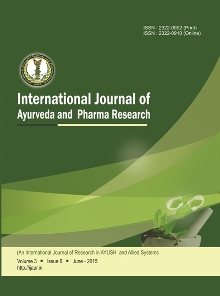Ayurvedic Management of Alopecia Areata
Abstract
Alopecia areata is an autoimmune disease condition characterized by patchy, non-scarring hair loss due to immune-mediated damage to hair follicles. It commonly affects the scalp, beard, and moustache areas, with exclamatory hairs often visible at the lesion margins. The condition usually manifests between the second and fourth decades of life and is influenced by genetic, environmental, and psychological factors. In Ayurveda, alopecia areata is correlated with Indralupta explained under Kapalagata Roga by Acharya Vagbhata and Kshudra Roga by Acharya Sushruta. Indraluptha is occurs due to the vitiation of Vata and Pitta doshas in the hair root (Romakoopa), leading to hair fall, followed by Kapha and Rakta doshas obstructing regrowth. Prachana, a type of Raktamokshana (bloodletting), is considered the first line of treatment. In this case study, a 20-year-old male with Alopecia areata was successfully treated with Ayurvedic Shodhana (purificatory) and Shamana (pacifying) therapy. Complete hair regrowth and symptom relief without recurrence were the outcomes of the treatment. This result emphasizes how Ayurvedic treatments can provide a comprehensive and long-lasting strategy for treating alopecia areata by addressing its underlying causes and reestablishing systemic equilibrium.
Copyright (c) 2025 International Journal of Ayurveda and Pharma Research

This work is licensed under a Creative Commons Attribution-NonCommercial-ShareAlike 4.0 International License.


